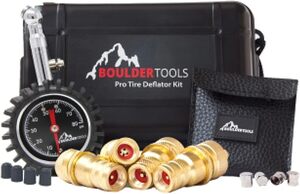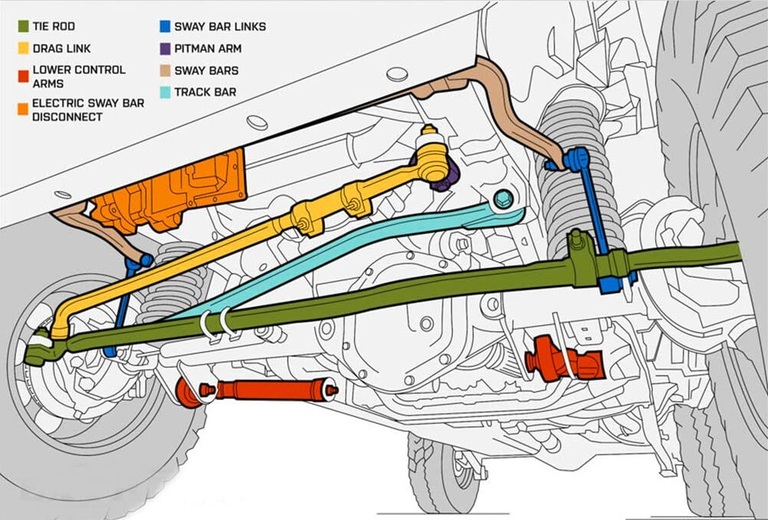Off-Road 101 Guide
Ready to Explore the Great Outdoors?
It’s time! You’re ready to head out to Barnwell or Bridgeport to see what all the off-roading hype is about. With the right preparation, you’re sure to have a great time!
Before you hit the trails, there are a few things you need to do to prepare your Jeep. We’re talking about airing down your tires, disconnecting sway bars, and why these steps are important. We’ll also go over some of the tools you’ll need to help with these tasks.
As you begin to discover what your Jeep can do, it’s important not only to learn about its features—like airing down your tires and manually or electronically disconnecting sway bars—but also to understand how to off-road safely to protect yourself from injury and your vehicle from significant damage.
Disconnecting the sway bar allows for greater suspension articulation, in other words, allows the axle and the tires to move up and down more freely and maintain better contact on uneven terrain —exactly what you want when crawling over rocks or ruts.
Air Down Your Tires
Lowering the air pressure in our tires creates a flatter and wider surface for the tire to meet the trails. This is done to gain better traction when we’re trying to go through soft terrain or climb obstacles.
Airing down to 15 to 17 pounds of air pressure is common for most all-terrain or mud-terrain tires on standard wheels. If you’re running bead locks, you can go much lower than that.
How to air down
There are a few different methods for airing down your tires. You can just use your basic tire gauge to release air and then check it every so often until you’ve reached your desired air pressure. With four tires to do, that can become time consuming.
There are also tire deflators that attach directly to the valve stem and release air automatically or at a preset rate, making the process quicker and more precise.


Video Showing Why we Air Down
Watch how different tire pressures change the way a Jeep tire crawls over obstacles.
Disconnecting the Sway Bar
What is the sway bar and what does it do?
When a vehicle is traveling down the road and enters a turn, the vehicle tends to lean or “roll” away from the direction of the turn. The sway bar minimizes the roll, keeping the vehicle flatter and more stable on the road surface to maintain better traction and control.
Without a sway bar, especially in top-heavy vehicles like a Jeep, taking a turn too sharply or at high speed increases the risk of losing control or even rolling over.
Why do we disconnect the sway bar?
Disconnecting the sway bar allows for greater suspension articulation, in other words, allows the axle and the tires to move up and down more freely and maintain better contact on uneven terrain —exactly what you want when crawling over rocks or ruts.
How do we disconnect the sway bar?
- Rubicon models have electronic disconnects
- Most aftermarket lift kits may include quick disconnects for sway bars
- Other Jeeps may require the use of a couple of wrenches to disconnect the sway bars

To disconnect the sway bar, you will be removing the sway bar links (in blue) from the axle.
- If you have quick disconnects, simply remove the retaining pin and detach the link from the axle bracket.
- If you don’t have quick disconnects, you’ll need to use the appropriate tools to remove the nut and bolt securing the link to the axle.
Once the sway bar links have been disconnected, push them up and out of the way, then secure them with zip ties.
Engaging Four Wheel Drive
Bonus topic!
Lorem ipsum dolor sit amet, consectetur adipiscing elit. Ut elit tellus, luctus nec ullamcorper mattis, pulvinar dapibus leo.
Ready to take your Jeep off the pavement? With the basics covered—from airing down and disconnecting sway bars to knowing when 4WD should be engaged—you’re set for a safer, more confident trail experience. And remember: never wheel alone. Join one of our upcoming Off‑Road 101 sessions or connect with fellow members for hands-on practice and support.
